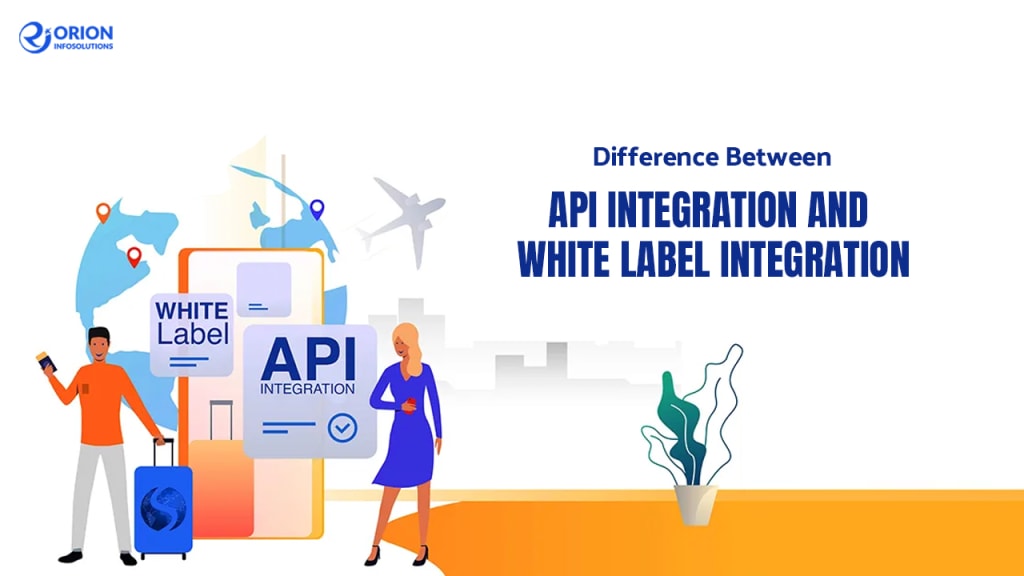Difference Between API Integration and White Label Integration
API Integration and White Label Integration are two distinct approaches to integrating third-party services into your software or application.

Introduction
API integration is a crucial aspect of modern-day technology. With the rise of digital solutions, it is becoming increasingly important for different systems to communicate with each other in order to achieve seamless integration. In this article, we will explain what API integration is, how it works, and why it is so important.
What is API Integration?
API stands for Application Programming Interface. It is a set of protocols, routines, and tools for building software and applications. In simple terms, API integration is the process of connecting different software systems so that they can communicate and exchange data with each other.
Read More: Lottery Software Developers
API integration allows different applications to work together seamlessly, without the need for manual intervention or custom code. This is particularly important for businesses that rely on multiple software solutions to manage their operations. By integrating these solutions, businesses can save time, reduce errors, and increase efficiency.
How Does API Integration Work?
API integration works by defining a set of rules and protocols for how different systems can communicate with each other. These rules specify how data should be structured, how it should be transmitted, and how it should be validated.
When two systems need to communicate with each other, they use APIs to establish a connection. The APIs then facilitate the exchange of data between the two systems, allowing them to work together seamlessly.
There are many different types of APIs, each with their own set of protocols and rules. Some APIs are designed for specific applications, while others are more general-purpose. Regardless of the type of API, they all serve the same basic function: to allow different systems to communicate with each other.
Why is API Integration Important?
API integration is important for several reasons. First, it allows businesses to streamline their operations by connecting different systems together. This can help businesses save time and reduce errors, as well as increase efficiency.
Second, API integration can help businesses stay competitive by enabling them to leverage the latest technology solutions. By integrating different applications and systems, businesses can take advantage of new features and functionality without having to replace their entire software stack.
Third, API integration can help businesses to provide better customer experiences. By integrating different systems together, businesses can provide customers with a seamless experience across different touchpoints, such as their website, mobile app, and customer service portal.
Overall, API integration is an essential aspect of modern-day technology. By connecting different systems together, businesses can save time, reduce errors, and increase efficiency, while also staying competitive and providing better customer experiences.
Key Differences Between API Integration and White Label Integration:
API Integration and White Label Integration are two distinct approaches to integrating third-party services into your software or application. While both involve incorporating outside functionality into your product, there are key differences between the two.
White Label Integration:
White Label Integration refers to the process of integrating an existing third-party service or software into your product, and then rebranding that service as your own. It allows companies to offer additional services to their customers, without having to invest the time and resources required to build those services from scratch.
For example, a marketing agency may choose to white label an email marketing software, and offer it as part of their marketing package to clients. The agency would then brand the software as their own, and their clients would be able to access the email marketing functionality through the agency's website.
Unlike API integration, white label integration is not customizable. Once the third-party service is integrated into the product, it cannot be modified or changed. This means that the company using the white labeled service must rely entirely on the third-party betting api provider provider for updates and maintenance.
Customizability: API integration is highly customizable, allowing developers to choose which specific functions they want to incorporate into their application. White label integration, on the other hand, is not customizable, as the third-party service cannot be modified once integrated.
Maintenance: With API integration, developers are responsible for maintaining the integration and ensuring that it remains compatible with their application. With white label integration, the third-party provider is responsible for maintaining the service.
Branding: API integration does not involve any branding, as the functionality of the API is simply incorporated into the existing application. With white label integration, the third-party service is rebranded as the company's own, allowing for seamless integration into the product.
Conclusion
API integration and white label integration are two important concepts that can help businesses streamline their operations and improve their services. API integration allows businesses to connect their software systems with other systems or applications, while white label integration enables businesses to offer third-party products or services under their own brand.
Both types of integration have their own unique advantages and disadvantages, and choosing the right integration approach depends on the specific needs and goals of a business. API integration is more flexible and customizable, allowing businesses to build their own integrations and tailor them to their specific requirements. White label integration, on the other hand, can provide businesses with ready-made solutions that are easy to implement and can be branded as their own.
Overall, whether a business chooses API integration or white label integration, it is important to carefully evaluate their options and consider factors such as cost, complexity, scalability, and maintenance requirements. With the right integration strategy, businesses can leverage the power of technology to streamline their operations, improve their services, and stay ahead of the competition.
Frequently Asked Question ( FAQs )
Why is API Integration important?
API Integration allows developers to add new features and functionality to their product quickly and efficiently, without having to build those features from scratch. It also allows for greater customization and flexibility, as developers can choose which specific API functions they want to incorporate into their application.
What are the benefits of API Integration?
There are several benefits to API Integration, including:
Increased functionality: API Integration allows developers to add new features and functionality to their product quickly and efficiently, without having to build those features from scratch.
Customizability: API Integration is highly customizable, allowing developers to choose which specific functions they want to incorporate into their application.
Flexibility: API Integration allows for greater flexibility, as developers can choose to integrate with different APIs depending on their needs.
Efficiency: API Integration is an efficient approach to adding new functionality to an application, as developers can leverage pre-existing functionality instead of building everything from scratch.
What are some examples of API Integration?
There are many different types of APIs that can be integrated into an application, including:
Payment processing APIs
Social media APIs
Cloud storage APIs
Messaging APIs
Location-based APIs
Weather APIs
How do I get started with API Integration?
Getting started with API Integration can be challenging, especially if you're new to the concept. Some key steps to get started with API Integration include:
Identify which APIs you want to integrate with.
Understand the API documentation and how it works.
Plan out the integration, including which specific functions you want to incorporate into your application.
Test the integration to ensure that it works as expected.
Maintain the integration over time to ensure compatibility and security.
About the Creator
DC Kumawat
Being Managing Director and Co-founder of Orion InfoSolutions, a Software Development Company. I started my career in Information and Technology 12 years back as a new-age entrepreneur in emerging digital India.






Comments
DC Kumawat is not accepting comments at the moment
Want to show your support? Send them a one-off tip.